I placed a comment in Feb 2011 in my Twitter that there are violations of research ethics in the Pattanam excavation headed by KCHR, Trivandrum... Later in April and May 2011 I have published Copies of the Orders received by Centre for Heritage studies Hill palaceThrippunitthura Ernakulam and the report submitted by P K Gopi,Registrar CHS to Archaeological survey of India ,in my Blog” malayaalan-malayaalanblogspot.com”and in my web www.malabarandkeralastudies.net .
You may kindly go through this site to evaluate my academic /and research works also.
In my academic life I have seen various kinds of Violation of research Ethics .There are academicians and researchers who have no intellectual honesty. I used to fight against such
Tendencies in research activities.
The present issue is one of the best examples of Intellectual Dishonesty, Violation of ethics of research, violation of Govt: rules related to Archaeological excavations, Suppression of facts, giving misinformation’s to academic and public world Etc related to a research work in an Area of very high Archaeological potential. Please see my opinions.
With regards
Dr N M Nampoothiri 27/8/2011
Bring control of Pattanam Excavation under Archaeological Survey of India
Dr N M NAMPOOTHIRI
1. A S I must take up the Complete charge of Excavations at PaTTaNam,Kerala
2 KCHR is to be removed from the responsibility of pattanam research and it must be dissolved.
3Action must be taken against the present Director for the violation of the existing laws of the land and propagating religious Fanaticism..
4 Rename the present Excavation to” KODUNGALLUR EXCAVATIONS.”
5 Rename the Muziris Heritage project as Kodungallur Heritage Project.
Initially The Excavation at paTTanam was a research project done by CHS. The Registrar of CHS submitted a project to Archaeological survey of India in April 2003 and got sanction on 1/3/2004 to do primary digging at Pattanam. P K Gopi, was the director of the excavation. Dr Selvakumar and Jenny peter were the Co directors. On April 22, 23,and 24 -2011 primary trenches were taken and artifacts were collected .The registrar submitted a detailed scientific report to ASI and the report was published in the Journal of CHS in 2005. (8 pages. See my blog) The report was the first of its kind in Kerala archaeology and a breakthrough in Cranganuur excavations.
During 1996 to 2004 this Selvakumar and another researcher K P Shajan were doing Exploration and Excavations in Cranganuur area on both banks of river Periyar. Nearly 40 places were Excavated by them and many artifacts were collected and transferred them to Union Christian College Alwaye in 1998. Dr P J Cheriyan ,the present Director of KCHR was a member of these activities; he was a lecturer in History in the U C College. at that time
The team Dr. Cheryan, Dr. Selvakumar, and K P Shajan never mention the primary digging done by CHS or the detailed report .Even in the reports of KCHR, the pioneering work of GREAT importance is not mentioned in the proper way .The new findings of KCHR are not much compared to CHS findings.
The KCHR team is misinforming the academic world that the pioneering works are done by them. Actually what happened was that Cheriyan, Selvakumar and Shajan gradually taken up the research project to KCHR even at the time of the primary trenching in 2004.Selvan and Shajan were associated with CHS and KCHR at the same time .KCHR is a Trust which is working on Govt grants. CHS is a Govt institution to do such works. There is no need to criticize the starting of a new project by KCHR.
The Work of CHS was headed by P K Gopi and not by Shajan etc. KCHR made only a passing remark on this excavation report. In their “muziris heritage project- Pattanam Heritage project -2008’ a report circulated, there is no reference of the crucial findings of CHS .It starts with excavations of 2007.Photographs of Chera Coins and other artifacts are given in this report but the findings of CHS is not even mentioned The CHS collected the Amphora pieces Beads of various kinds, precious stones rouletted wares and Chera Coins. They reported about a ring well, bricks and brick wall. KCHR kept silence about P K GOPI, the Director of Excavations or these crucial findings. It is a suppression of facts...
Shajan conducted many excavations in this archaeologically potential areas and shifted artifacts to UC College Alwye Shajan in his Phd thesis says that antiquities collected through excavation from pattanam and other areas were handed over to U C College cultural study centre.
“Archaeological survey has been carried out in order to find past cultural remains in the study area. Archaeological objects and pottery of various cultures were collected from a number of sites in the coastal areas of Thrissur and Ernakulum dt. Even though no systematic archaeological excavation was conducted in this regard, exploration and trial trenching have been carried out to recover archaeological objects. The collected materials are now kept in the archaeological museum, centre for cultural and ecological studies Union Christian College Alwaye
Dr Cheriyan was working there at that time.
Shajan conducted exhibition of these items on 23 -11-2003 and later announced that the team almost located the port MUZIRIS. In March 2011 CHS obtained permission to conduct Excavations. On March 23 and 28 Shajan met the media and told them that Hunting for Muziris is almost successful. Later in 2006 Shajan and Mr Selvakumar announced through BBC that
“They placed the ancient port as having existed where the small town of Pattanam now stands. The team believes Pattanam as the place where Muziris once stood.” Shajan said ”We believe it could be Muziris.”
On 23 march 2004(one month before the starting of excavation by CHS), Shajan conducted an exhibition at Trivandrum with the help of KCHR. The media report goes thus:
”Pattanam near North Paravur was the ancient city of Muziris or part of Muziris according to geo-archaeological evidences unearthed during a study led by researcher K P..Shajan. The other members of the research team Included Roberta Tomber of the University of Southampton, V Selvakumar of the centre for historical study ,Thrippuuniththura, and Kerala Council of historical research Director Dr P J Cheriyan---.Fragments of Imported Roman amphora used for importing wine, and other materials Yemanese and west asian pottery, were found at Pattanam.The Indian roulette ware-----was also found.Bricks tiles pottery beads and artifacts found at pattanam were very similar to those found----at Arikkamedu.”
How these valuables were obtained to K P Shajan and his team – Roberta Tomber, a foreigner,Dr selvakumar ,and Dr Cheriyan? The excavations of CHS were not begun.
Selvan was the Co-director of the project of CHS! All of them are in double role!!.
What was the role of P J Cheriyan in this excavation and exhibition?
How a foreigener was associate in this trenching?
Now the question is from where did they get these antiquities? There was a panel discussion about these finds. The Kerala university V C Dr Iqbal Dr Michael tharakan attended the exhibition
Was there any permission to conduct excavations and Exhibitions in this manner and to make such announcements in 2004 march??
It is said that many people are doing surveys and excavation works in the archaeologically high potential area. We have to look in to the matter very seriously . Otherwise the valuable archaeological and historical places and evidences will be lost forever. KCHR director has made a request to the Prime minister of India and UPA chairperson to take necessary steps to make avail 45 hectors of land for Pattanam excavations! It is reported in internet media . He has pointed out the necessity of 5 acres in another context also.
"People are digging the land for constructing houses, building roads and digging wells there," P.J. Cherian, director of the Kerala Council for Historical Research (KCHR), told IANS here.
KCHR along with the Archaeological Survey of India (ASI) have been conducting this ambitious research as part of the Muziris Heritage Project.
"We need this land - at least five acres of the 45 hectares - to be acquired by the state government - not by force, but by taking the locals into confidence and paying them a reasonable price."
Archaeologists K.P. Shajan and V. Selvakumar along with Cherian have been involved in the excavations at Pattanam, where evidence of human habitation dating back to the Iron Age has been found.
However, the state government has not able to acquire the land.
Cherian said he and the archaeologists were very "clear" - they do not want to antagonize the local people who had been offering whole-hearted support for the excavations. (The Hindu August 8 ,2700)
This is the situation at “pattaNam “ ASI must interfere in this issue at the earliest.ASI mustwithdraw the permission given to KCHR or any other institutions to conduct excavations at Cranganuur area including pattanam. along with this ASI must take up the Explorations and Excavations and renovations of early structures under there on control.
There is no meaning in the concept of “Muziris heritage Project It is totally a publicity and marketing idea.It is false
.None of the places or structures hold any heritage factor of Muziris.They are all modern items compared to Muziris factors.
KCHR started their work in pattanam area only in 2007.Benny Kuriakose, an Engineer was given the charge of Muziris Heritage project by KCHR in 2006!. Now according to The Hindu, The excavations by KCHR were started in 2005!
“ He drew the muziris plan in 2006” media reports says. How can it is possible? He says that he started the project in 2008 with an aid of 41 crore rupees as central govt aid.In sept 2009 another allotment of 141 crore was made by Govt of Kerala.Hon: Finance minister of Kerala made this announcement :The Muziris Heritage project a unique tourism and conservation project linking monuments in the area surrounding the bygone 2000 year old Muzirisport will be opened to the public next month”
“. Kuriakose, an alumnus of the College of Engineering (he has a degree in Civil Engineering), the Government Arts College and the Model School in the city, began his career as an apprentice to late architect Laurie Baker. Soon he found his calling in conservation and is today, one of India's leading conservation architects renowned for his tsunami reconstruction projects in Nagapattinam, rehabilitation villages for victims of the Latur and Kutch earthquakes, Dakshinachitra heritage centre, near Chennai, and so on.”
He says ” Brick by brick, stone by stone, the ancient port city of Muziris, which was once one of the most important centres of maritime trade in the world, is being restored to its former glory under the Muziris Heritage Project of the Government of Kerala. At the helm of this ambitious project (currently one of the biggest conservation efforts in India), is its chief consultant, conservation architect Benny Kuriakose. The Chennai-based Kuriakose, who grew up in the city, was here recently for a seminar on conservation. He got chatting about the restoration efforts in and around Kodungalloor taluk in Thrissur district and North Paravur taluk in Ernakulam district, the area of the ‘Muziris Heritage Site.'”
“Kuriakose drew up the Muziris plan in 2006 and the project was started in September 2008 in collaboration with 19 government departments and agencies, with Central Government aid of Rs. 41 crore – the biggest allocation for a conservation plan ever. In the initial phase of the project, four of the 27 odd museums, namely the Paliam Kovilakam, the Paliam Nalukettu and two synagogues, and two archaeological sites, namely, Pattanam and Kottapuram Fort, will shortly be opened to the public.”
“It will not be your usual museum visit. Nor will it solely cater for tourism. All these monuments are connected and we want to tell a story – the story of Kerala – through them. Wherever there are missing links there will be museums (such as the Chavittunatakam Centre at Gothuruthu, Syrian Christian History Museum at Kodungalloor, Traditional Lifestyle Museum at Chendamangalam, Armory Museum at Kottapuram fort and so on). The Muziris Heritage Project is primarily intended to be a centre for education rather than tourism, with focus on sustainability and involvement of the local communities,” explains Kuriakose, adding that the master plan is a model one for conservation in Kerala because it follows international guidelines such as UNESCO charters on heritage conservation, the Nara Document on Authenticity, ICOMOS (International Council of Monuments and Sites) charters and so on. “
Muziris Heritage Site and various Museums (Note prepared for discussion on 21 and 23 November 2009) mention 18 Museums. Heritage centres or museums are not yet seen any were in the so called so called Muziris Area. Renovation of structures of this nature must be done with the permission of ASI. We hope such orders were issued to KCHR.
The publicity given to the name Miseries and its identification of Muziris with Pattanam , in India and abroad is only the outcome of all these activities. There seem to be some hidden agenda behind in these false statements .It is not proper way of research. The archaeological excavations and explanations given to the Findings are predetermined.
Social history-Dangerous Comments by Dr Cheriyan
Dr Cheriyan has made some remarks about Brahmins and Savarnas of Kerala in May 2011. A piece of pottery having three letters was collected from the trench. The scripts are said to be Brahmi and the letters are ca ma Na / a ma Na which denote Sramana or Jains according to them. This is said to be an inscription of first or second century BC.
The disappearance of Port Muziris and its maritime trade activities after first century AD was interpreted in this way.
Some prominent writes wrote in 2010
“When did Muchiri disappear and how? Who were the makers of the glory that was Muchiri, and what happened to them? With the official establishment turning the history project into one of tourism, there is no serious attempt to find answers to these questions.
The official Kerala Tourism website attributes the port’s disappearance to natural causes and European colonisation. It says, “The Muziris port underwent a tragic incident some time around the middle of the 14th century in a massive flood and resultant silting triggered by the river Periyar.-----“
“Whatever the explanation for the disappearance of the structures, it is reasonable to assume that the port’s decline began with the establishment of a feudal order dominated by the Vedic community, which looked down upon seafaring, between the 8th and 10th century.(B R P Bhasker-reported in The Hindu.)
In May 2011 a group of scholers visited Pattanam .Dr Cheriyan gave the following interpretation about the Social History of Kerala:
Why he is bringing such comments of Religious Faunaticism ? on the basis of this statement alone he must be removed from the responsibility of pattanam research and action must be taken against him for making Religious friction .KCHR is aCouncil of prominent historians.they are bound to answer these type of activities of Cheryan
I personally believe that the pattanam paithruka samrakshana samithi and such other groups are coming up because of these type of ideas are being propagated by pattanam excavation authorities.This council must be dissolved on the basis of their activities against the law of the land.

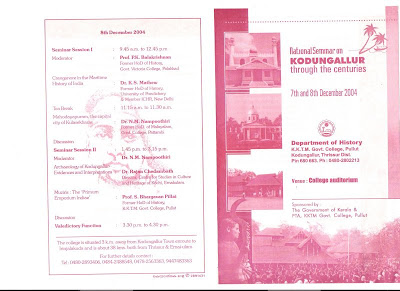
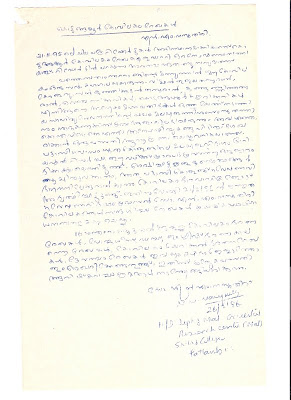
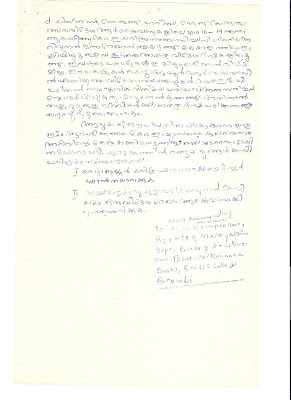

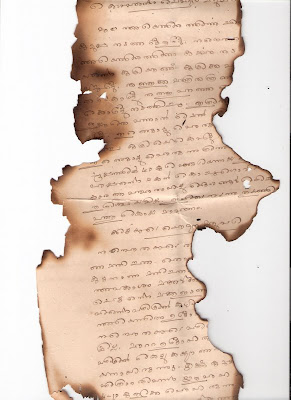
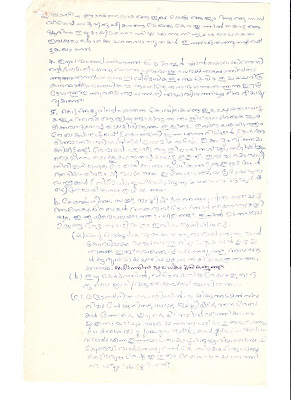
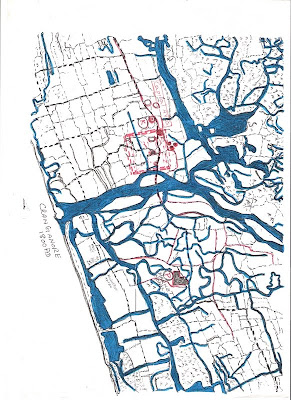
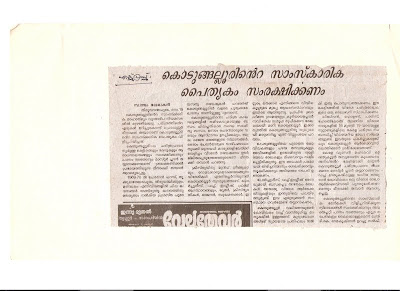
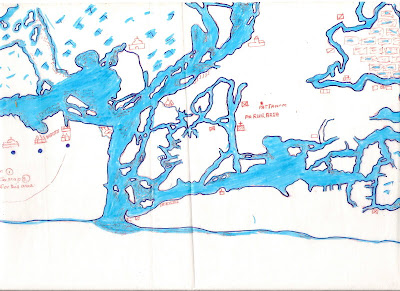
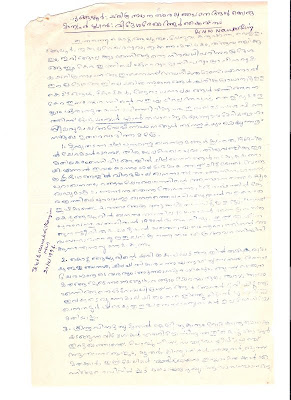
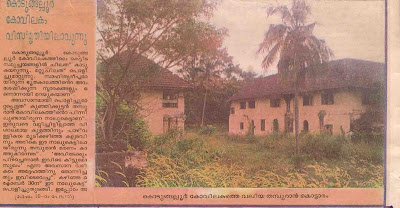
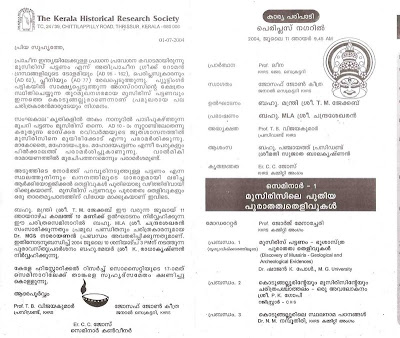


 What took place in November 2011 was neither a debate nor a discord. The venue was Thiruvananthapuram, at the Joint Annual Conference of Indian Archaeological Society (ACIAS), Indian Society for Prehistoric and Quaternary Studies (ISPQS), and Indian History and Culture Society (IHCS). Strongly criticising the archaeological excavations at Pattanam site in Kerala and the rambling hotchpotch of cultural remains without periodisation especially pottery, veteran Archaeologist and former Director of Archaeology and Museums, Karnataka, A Sundara’s strong criticism came after the Kerala Council for Historical Research (henceforth KCHR) Director presented his paper on Pattanam excavations. Professor Sundara is one of the most reputed Archaeologists in India known for his objective outlooks and unbiased conclusions for which he was honoured at the meet. Earlier, Professor Sundara was also one of the well wishers of Pattanam excavations in the Pattanam Archaeological Research (PAR) brochure published by the KCHR in March-April 2008. His censuring of Pattanam excavations although came as a surprise, was not an isolated incident. Much more censorious on Pattanam was Professor MGS Narayanan, eminent historian and former Director of ICHR. In an earlier seminar held at Kochi in August 2011, Dr R Nagaswamy, former Director of Archaeology, Tamil Nadu criticised the KCHR for its biased approach and hasty conclusions to establish some hidden agenda at Pattanam. Dr T Satyamurthy, former Director, ASI was equally critical of the excavations and cautioned KCHR authorities against any hasty conclusions. Pattanam excavations form part of the Muziris Heritage Project (MHP) launched by the KCHR and headed by Chairman Dr KN Panikkar, former Professor of Jawaharlal Nehru University (JNU), and Director Dr PJ Cherian, a modern historian who heads archaeological excavations. In a write up for Malayalam journal Mathru-bhumi in 2014, Professor PM Rajan Gurukkal, historian and one of the members of the mhp arguing for Pattanam also admitted that the site was unfit for any archaeological excavation as the soil has been virtually tampered for various construction purposes and digging of wells leaving no space for stratigraphical analysis of the cultural remains which have agglomerated. Surprisingly until now, no historian or archaeologist or any professional body such as the ASI has come forward in defence of the KCHR or Pattanam. Even Professor Romila Thapar, one of the patrons of the MHP is virtually silent.
What took place in November 2011 was neither a debate nor a discord. The venue was Thiruvananthapuram, at the Joint Annual Conference of Indian Archaeological Society (ACIAS), Indian Society for Prehistoric and Quaternary Studies (ISPQS), and Indian History and Culture Society (IHCS). Strongly criticising the archaeological excavations at Pattanam site in Kerala and the rambling hotchpotch of cultural remains without periodisation especially pottery, veteran Archaeologist and former Director of Archaeology and Museums, Karnataka, A Sundara’s strong criticism came after the Kerala Council for Historical Research (henceforth KCHR) Director presented his paper on Pattanam excavations. Professor Sundara is one of the most reputed Archaeologists in India known for his objective outlooks and unbiased conclusions for which he was honoured at the meet. Earlier, Professor Sundara was also one of the well wishers of Pattanam excavations in the Pattanam Archaeological Research (PAR) brochure published by the KCHR in March-April 2008. His censuring of Pattanam excavations although came as a surprise, was not an isolated incident. Much more censorious on Pattanam was Professor MGS Narayanan, eminent historian and former Director of ICHR. In an earlier seminar held at Kochi in August 2011, Dr R Nagaswamy, former Director of Archaeology, Tamil Nadu criticised the KCHR for its biased approach and hasty conclusions to establish some hidden agenda at Pattanam. Dr T Satyamurthy, former Director, ASI was equally critical of the excavations and cautioned KCHR authorities against any hasty conclusions. Pattanam excavations form part of the Muziris Heritage Project (MHP) launched by the KCHR and headed by Chairman Dr KN Panikkar, former Professor of Jawaharlal Nehru University (JNU), and Director Dr PJ Cherian, a modern historian who heads archaeological excavations. In a write up for Malayalam journal Mathru-bhumi in 2014, Professor PM Rajan Gurukkal, historian and one of the members of the mhp arguing for Pattanam also admitted that the site was unfit for any archaeological excavation as the soil has been virtually tampered for various construction purposes and digging of wells leaving no space for stratigraphical analysis of the cultural remains which have agglomerated. Surprisingly until now, no historian or archaeologist or any professional body such as the ASI has come forward in defence of the KCHR or Pattanam. Even Professor Romila Thapar, one of the patrons of the MHP is virtually silent. 



